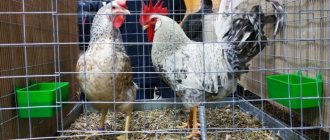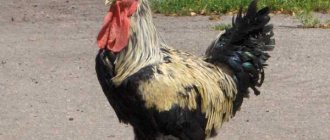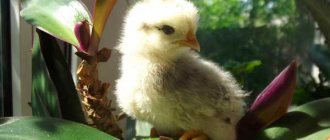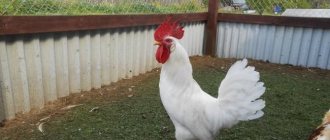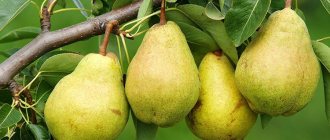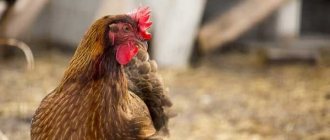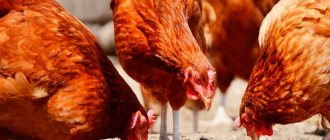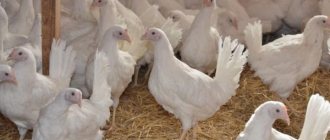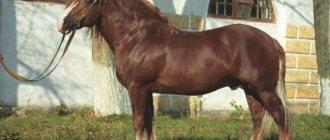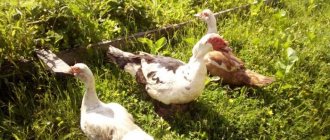The Araucana chicken breed is a fairly old poultry, which, however, became known in mass circles only in the 1920s. Before this, the bird was known only in South America. Gradually, the bird spread throughout Europe, and then came to us. Today, the Araucana is a rather rare bird in the Russian Federation. In our country, this bird is bred mainly because of its decorative appearance and unusual blue eggs.
In the publication you will find a detailed description of the breed, read reviews from poultry farmers about this chicken and see photos of representatives of the Araucana breed.
Origin story
Photo:
A fairly ancient breed of chickens native to South America. Named after the Indian tribe of the same name. One of the first mentions of chickens laying blue eggs dates back to 1526.
By the end of the 19th century, Araucanas were brought to the European continent by sailors.
When choosing a rooster, preference was given to tailless breeds, as it was believed that it would interfere with the fighters. Some experts believe that the eggs of Araucana chickens have an unusual color because they were crossed with wild pheasants.
Araucana was introduced to the world at the World Scientific Poultry Association in 1920 in The Hague. The characteristics of the breed have won the hearts of European poultry farmers.
It began to spread quickly and then further work with unusual birds began. This has led to the fact that poultry is now subject to several standards.
Productive characteristics
Chickens that lay blue eggs are something of a curiosity in our area. Therefore, if you want to open a new chapter in the development of poultry farming, feel free to purchase representatives of the breed. However, be prepared for the fact that you will not expect excessively high productivity from them regarding egg laying. However, they are much higher in price than ordinary chicken eggs that we are used to eating. Many people will want to try this chicken product, so if you suddenly decide to sell Araucana eggs, buyers’ interest in them is guaranteed.
Reviews about the eggs that Araucana will bring you are very varied. It is believed that they contain no cholesterol. But in reality this is not true, because these eggs have yolks, and they always contain cholesterol.
But the question about its quantity still remains. However, the statement that such eggs, due to the absence or low level of cholesterol, are not as healthy as other poultry breeds, is just an assumption. Remember that nutritionists around the world recognize eggs as one of the best dietary foods when consumed in moderation.
Description of the breed
Characteristic:
- Color: standardized 12 colors: Wild, Golden-maned, Black-red, Wild blue, Golden-maned blue, Blue-wheaten, Wheaten, Silver-maned, Black, Blue, Blue edged, Cuckoo (hawk). They have the characteristic colors of the metatarsals;
- Weight: the weight of a rooster is 2-2.5 kg, a chicken is 1.6-2 kg;
- The tail and tail are missing;
- The head is small, the beak is slightly curved;
- Tufts of feathers stick out near the earlobes. Some subspecies have a beard made of feathers. Earlobes and earrings are characterized by small sizes.
- The shape of the feathered comb is similar to a pea.
- Birds have a small, dense body. At the same time, the chest is quite wide.
- The birds have a neck of medium length.
- Eyes orange;
According to the description of poultry farmers, Araucana chickens are very calm birds, which greatly simplifies the process of raising them. Birds are unpretentious and quickly adapt to new conditions. The disadvantage of this breed is the pugnacity of the roosters.
Exterior
After this breed began to be bred in the USA and Europe, it quickly divided into several standards.
German
They have hardly changed since 1965 and now in Europe and Russia they are the only ones recognized. According to these standards, birds should look like this:
- the head is small, with a small pod-shaped comb in both females and males;
- the neck is short;
- earrings and earlobes are small and reddish in color. Near them there are special warts, from which lush and pronounced tufts of long feathers grow;
- eyes orange-red;
- the beak is medium-sized, slightly curved down. In roosters it is larger and more curved;
- the body is dense, with an elongated back, a broad chest and developed shoulders;
- the tail is completely absent, as are the caudal vertebrae;
- the plumage is dense, thick;
- the legs are strong, unfeathered, covered with blue-green skin. There are 4 toes on the paws;
- roosters are larger than hens.
German standard for Araucana chickens
American
US breeders actively used Araucana chickens to develop new breeds. Two of them, Ameraucana and Bantam, have taken their rightful place in the world poultry industry. However, the free use of genetics was not in vain - American standards are almost never used.
English and Australian
They appeared relatively recently and have not yet gained much popularity. They differ from German ones mainly in that they allow the presence of a tail. There is always a crest on the laying hen's head.
Variant of the exterior of the Araucana chicken
Varieties
Breeders have bred several types of Araucana chickens. They can be of American or English type. Such birds are characterized by the presence of tail feathers, as they were obtained by crossing with other chickens. English type birds have a crest on their heads.
American variety
English variety
Types of Araucanas
There are several varieties of chickens of this breed. For example, a very interesting type is the English tailed Araucan. Representatives of this form have a crest on their heads. There is also a separate type of this breed - the American. As the name suggests, such chickens are bred mainly in America.
Without exception, all types of Araucanas are quite popular. They are bred by farmers in many countries around the world. However, the most widespread are the German tailless Araucanas. It was in Germany that maximum attention was paid to the selection and improvement of the characteristics of this breed. It is believed that the tailless German Araucanus is also most suitable for breeding in the Russian climate.
Actually, the variety of this breed itself, improved in Germany, is divided into three more types:
- with symmetrical and equal-sized bundles on both sides of the head;
- with buns and beard;
- without buns, with a beard and sideburns.
There is also a dwarf form of the German Araucanas. However, unfortunately, it is not very widespread.
Productivity
The egg-laying period begins at 5.5-6 months, however, reviews also describe “late-ripening” individuals that begin to lay eggs at 10 months.
Delayed egg laying can occur in overweight birds (reducing the feeding rate for 1-1.5 months will help). The second reason may be a late brood, which includes pullets: autumn or winter.
The color of the eggs changes several times during the season. At the beginning of oviposition, the color is most intense, then it decreases. After the end of the cold season, when going out for a walk, the color also becomes brighter.
According to most reviews, chickens of the Araucana breed lay eggs well, with virtually no reduction in productivity during molting and almost without reacting to external stimuli (weather and stress factors).
The only factor that can delay the egg-laying process by 2-4 weeks is transportation or moving to a new place.
The weight of eggs at the beginning of laying is small and gradually increases. On average, chickens lay eggs weighing from 56 to 72 grams. It is worth noting that if you come across specimens of blue color weighing 45-50 grams, then this may be the result of the “work” of dwarf Araucanas.
Crossing Araucanas with other breeds can give good results. Thus, crosses with Russian crested cats produce unpretentious offspring, distinguished by blue shells.
If you cross them with hens that lay brown eggs, the shell color of their offspring will be olive-greenish. The resulting individuals will be slightly larger than the Araucanas. The meat carcass is also good.
Shedding
Chickens laying colored eggs are excellent layers. They do not lose productivity even during molting. At this time, they need to receive a special balanced diet, which will contain a large amount of minerals and vitamins.
The maximum period of productivity is approximately two years after puberty. Then, these indicators decrease. After the chicken stops laying eggs productively, it is worth thinking about breeding young animals.
Modern farmers are giving more and more preference to these birds every day. They love them not only for their decorative characteristics; turquoise-colored eggs are very popular on the modern market - they are distinguished by their increased cost, which brings great profits. And in other respects, chickens are unpretentious.
Reviews
According to customer reviews, the advantages of the breed include easy adaptation to different temperatures. Birds are unpretentious and quickly adapt to new conditions.
Young chickens of the breed are resilient. Oviposition begins very early. In addition, they have an attractive appearance.
The disadvantage of the breed is the lack of independent breeding. Roosters of the breed are pugnacious. The rarity of the breed explains its high cost.
Breeding
Araucanas, according to the description of the breed by breeders, are good brood hens, although some of them have a tendency to false brooding. On average, one out of 7 or 8 females can become a hooker and then an excellent mother.
But a good brooding instinct does not mean that breeding problems cannot be avoided.
Essentially there are two of them: the presence of a semi-lethal gene and structural features of the body:
Semi-lethal gene
The genes responsible for the tufts of feathers on the head and the absence of a tail are semi-lethal. Thus, the yield of poultry that is correct from the point of view of the standard is extremely low; according to experts, at best, no more than 50-60%.
If the family composition is incorrect (in which both individuals have semi-lethal genes), fertility will be low, and hatched chicks may die within a few weeks.
The basic rule is to combine individuals with tassels and a goatee (a rooster with a goatee and a hen with tassels, and vice versa). It is worth noting that in broods it is quite common to find chicks with only one tassel, although they can acquire a second one after molting.
Taillessness
In fact, this is the complete absence of the tail, that is, several terminal vertebrae. This became another problem in breeding. Because of this feature, it is difficult for birds to mate.
Poultry farmers have to trim three to five centimeters of fluff around the cloaca of chickens and roosters. If this is not done, the fertilization of eggs will be extremely low - from 0 to 60%. When trimmed, it will be restored to 90-100%.
Experienced farmers advise starting Araucan breeding with chickens or adult pairs, but not eggs. Otherwise, you need to be absolutely sure of its origin.
The gene that is responsible for the color of eggs is easily inherited by crossbreeds. Their eggs cannot be distinguished from the eggs of purebred birds (this is why Easter chickens are often sold instead of the heroes of our review).
Buying chicks is also challenging. The structure of the Araucan's body and crest is such that it is difficult to distinguish a rooster from a hen until a certain age. The easiest way to do this is after the rooster has braids on his neck, that is, after 12 weeks of age.
Breeders also suggest not to rush to start families. After molting, the nature of the plumage (beard and tassels) of individuals may change. Only then can you make pairs with confidence.
Where can I buy?
The main difficulty when purchasing is that under the guise of Araucan you can buy eggs of mixed breeds:
- hens bred from Araucana and Russian Crested produce blue eggs;
- When crossed with breeds that lay brown eggs, individuals are produced that produce olive-colored eggs.
The gene responsible for the color of eggs is well inherited and the eggs of individuals with mixed blood cannot be distinguished by eye from the eggs of a purebred Araucana.
It is best to contact the following trusted factory organizations:
- VNITIP "Genofond" Sergiev Posad near Moscow - they sell day-old chicks.
- Private household plot of Alexander Ivanovich, Pushkino, Moscow region - sells hatching eggs in limited quantities.
- Peasant farm of Lukinykh A.N., Chelyabinsk region, Oktyabrsky district, Krutoyarsky village - chickens and young animals are sold in season.
Price may vary:
- from 250 rub. up to 1200 rub. depending on the age of the young;
- about 100 rub. per egg.
Despite their unpretentiousness and good health, Araucanas are not very popular. The main difficulties in breeding are the high cost of eggs and chicks, as well as the low fertility of eggs due to the structure of the body. The distinctive features of chickens are their attractive appearance and the unusual color of their eggs, from blue to green.
0
0
Copy link
Content
To keep chickens of this breed, a regular chicken coop with the possibility of dividing into enclosures is suitable.
It is important to equip the room with good ventilation, especially when kept in cages. Bird droppings release hydrogen sulfide and ammonia, and the birds themselves release carbon monoxide when they breathe. If these substances are not removed by ventilation, they can impair the health of the birds. There should be no drafts in the room. Araucanas are best kept in small families, 2-8 hens and a rooster, separately from other chicken families, because roosters are pugnacious and aggressive.
However, there is successful experience of keeping them in the same enclosure with larger poultry, in particular ducks. When kept in cages, there should not be more than four chickens per 1 m². The length of the perch is at least 35 cm per bird, more is possible. One nest is enough for five laying hens.
Araucanas live best in an isolated poultry house with the possibility of access to an outdoor enclosure. They fly poorly and reluctantly, and the aviary does not need to be covered. You can also let them out for walking; they are good foragers.
There should always be fresh water and a bowl of fine gravel in the pen. It is useful to dig a shallow but wide basin of ash into the ground. Chickens love to bathe in it, cleaning their plumage of skin parasites. At temperatures down to -5°C, birds can be released into an open aviary even in winter. If it is colder outside, they are moved to a heated room. However, the optimal temperature for these birds is between +16°C and +20°C.
Mode
Many poultry keepers notice how important a daily routine is for birds. Even if chickens are left to their own devices, they begin to get up and go to bed at the same time.
If you want your Araucanas to lay eggs well, you need to organize a daily routine that is similar to the bird’s natural rhythm:
- Climb. It is most natural to arrange a wake-up call at 6-7 am, regardless of the time of year. Turn on the light, open the enclosure.
- Breakfast. The chickens are fed for the first time exactly 3 hours after rising. There is no need to give food until this moment. After about an hour, remove the remaining food from the feeders and wash them.
- Other feedings. They are distributed evenly throughout the waking hours. With twice a day winter feeding, the second meal is served at 15:00. Dream. At 21:00 the lights in the chicken coop are turned off and the chickens are driven inside.
Diseases
In fact, the breed is hardy and has a strong immune system. The only problem for her is parasites. It is necessary to carry out preventive measures in a timely manner, to process feathers and chicken coops.
The biggest problems are caused by fleas, lice eaters and helminths. The latter can be dealt with with the help of veterinary drugs, which should be given periodically for preventive purposes. It would also be a good idea to protect the herd from infections through vaccinations.
- In case of infection with worms, black-billed birds become lethargic and their appetite practically disappears. Invite a veterinarian to examine the bird. The drugs are prescribed en masse – to the entire herd at once.
- Poison beetles infect the plumage of birds. They can be identified by observing the behavior of the herd. Individuals affected by this pest often itch, they are restless, fuss and eat poorly. You can get rid of them by spraying the feathers with a medicinal preparation (available at a veterinary pharmacy), but this is not enough - you need to treat the entire chicken coop.
- The most dangerous enemy is the feather mite. Infection with it leads to rapid baldness. Affected chickens are sentenced to slaughter because it is impossible to destroy the parasite.
- Wild birds often reward domestic fleas. Treating the poultry house and chicken coats will help.
Feeding
Birds' feeding should be organized in such a way that they do not overeat. Bird nutrition requires the use of vitamin and mineral complexes.
This breed also needs calcium. Birds of this breed eat the same food as regular chickens. Food should be rich in protein. That is why it is recommended to give them oil cake, earthworms, beans, fish waste, and bone meal.
To improve the functioning of the body, Araucana chickens are recommended to be given food rich in carbohydrates - grain, pumpkin, carrots, potatoes, etc.
This breed needs the fats found in oats and corn.
The diet must include: Silage; Yeast; Bone flour. These products are rich in vitamins that are necessary for the normal growth and development of birds. The bird also needs to be given mineral food in the form of wood ash, shells and gravel.
Features of cultivation
Birds have good health and good immunity, so they do not require special housing conditions or the mandatory maintenance of high temperatures.
Chicken coop
Chickens can be kept both in cages and in chicken coops. However, at home, it is the second option that is recommended. In this case, there should be no more than four birds per square meter of area. In the main room you can make nests with your own hands (one for three or four females), as well as perches at the rate of thirty centimeters for each individual. This article will tell you about perches for chickens.
Birds can be kept in small families of six to eight individuals in one room or box.
There should be no drafts in the room, but good ventilation is required. For the winter, it must be insulated to maintain a temperature of at least fifteen degrees Celsius. The floor must be covered with straw or a layer of sawdust. It is also important to take care of the presence of a walking area. Find out what the floor in the chicken coop should be like here.
The pen should be high enough to prevent birds from escaping through its walls. It is advisable to surround it with a fine metal mesh. It is also recommended to prepare a canopy for protection from precipitation and wild birds. In such walking areas, it is necessary to place feeders and drinkers, as well as containers with shell rock and river sand.
Nutrition
It is recommended to feed Araucan three times a day. In this case, for the first feeding it is necessary to prepare grain mixtures, including wheat, barley, corn, and oats. During the day, it is best to prepare wet mash based on mixed feed, bran, fermented milk products, broths and vegetable decoctions. Evening feedings should also be based on crushed or whole grains.
The daily diet of basic foods should not exceed one hundred and fifty grams, since overeating threatens obesity.
Herbs and greens from the garden, tops, and seasonal vegetables should be a mandatory addition. Fodder root crops and melons can be specially prepared for the winter. As sources of animal protein, it is useful to use meat and bone and fish meal, fermented milk products, cottage cheese, calcium - chalk and eggshells. Clean water must be in the drinking bowls at all times.
The following signs may indicate a lack of food components:
- biting your own eggs (lack of calcium and animal protein, malnutrition);
- feather loss outside the molting season;
- delayed growth and development;
- weakness of the limbs (caused by diseases of bones and joints that develop as a result of calcium and vitamin D deficiency);
- enlarged abdomen due to progressive rickets (lack of vitamin D).
In order to prevent the development of obesity, it is important to constantly let your chickens go for a walk. In the summer, all maintenance can take place under a canopy in the walking area. In winter, it is recommended to release the bird for one to two hours at a temperature of at least five degrees below zero.
To ensure that food does not end up on the ground, it is necessary to apply the rule of filling the feeders two-thirds full. It is also recommended to use heavy and short containers as them.
Diseases and their treatment
Despite the exotic nature of this breed, they are characterized by the presence of a fairly strong immune system.
That is why diseases are observed in quite rare cases. If birds are not properly cared for, pests may appear:
- Feather mite. Leads to baldness. Treatment of birds in this case is impossible. This is why sick individuals are killed.
- Puhoedov. These parasites destroy the activity of downy rods. When they appear, the birds itch and fuss. To eliminate these parasites, Araucana chickens must be treated with insecticides, which are produced in the form of sprays, which greatly simplifies this process. It is also necessary to disinfect the chicken coop to eliminate parasites. For prevention, the feathers of all individuals in the room are sprayed.
- Helminths. The cause of infection is contact with wild birds. When these parasites appear, poor appetite and weak motor activity in birds are observed. Treatment of pathology is carried out with special drugs.
- Bloch. These pests bite birds and that's why they itch. When they appear, the chicken coop is disinfected and the bedding is changed frequently. To avoid the appearance of pests, it is recommended to regularly carry out preventive maintenance, which consists of disinfecting the chicken coop.
What to do if chickens don't lay eggs well?
As mentioned at the beginning of the article, an Araucana chicken can lay up to 180 eggs per year. It is important to know the main reasons for the decrease in egg production. There are few of them, almost everything can be adjusted on your own.
- Age. Araucanas begin laying eggs at six months and finish at the age of about 10 years. But with age, the number of eggs laid decreases. Breeders of this breed say that chickens most often lay eggs between the ages of one and two years. After this age, the stock should be replaced.
- Overfeeding Overeating often leads to obesity, and, consequently, to a decrease in egg production. The weight of the laying hen should not exceed 1.8 kg.
- Infection with parasites - helminths, lice eaters, feather mites and fleas. Infected birds become lethargic, restless, eat poorly and quickly lose weight. Chickens affected by feather mites begin to go bald. It is very important not to try to expel parasites using traditional methods, but to contact a veterinarian at the first sign of their appearance.
Birds of the Araucana breed
